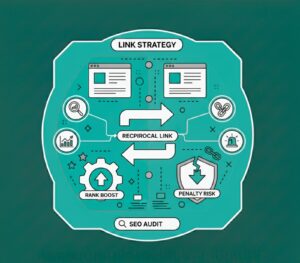Customer-Centric SEO: Optimising for How People Really Search
Blogs | SEO
Written By: Lauren Davison
Introduction
In recent years, SEO has depended primarily on customer behaviour. Successful companies study what users search, how they engage with content, and what drives action. Customer-centric SEO makes it possible for you to create content that not only ranks but also resonates and converts.
Real user signals, search behaviours, clicks, and reading behaviour assist in building a strategy. The strategy will have to be aligned with the customer journey. This blog provides actionable steps for user-intent SEO, behavioural SEO, and data-driven insights. That, in turn, builds traffic and increases conversions.
Table of Contents
Understanding the Link Between SEO and Customer Behaviour
SEOs used to concentrate primarily on keywords alone. Nowadays, search engines encourage websites that actually fulfil user requirements. This is where it becomes important to realise search intent and user behaviour analytics.
From Search Queries to Intent: What Customers Really Want
All searches are not equal. Users type queries with different purposes:
- Informational: Learning something new.
- Navigational: Searching for a particular site or brand.
- Transactional: Ready to purchase or act.
- Commercial Investigation: Pre-purchase research.
With an analysis of these types of intent, companies can develop content that matches the expectations of users. For instance, “best running shoes” is informational and needs a comparison or guide. Contrary to that, “buy Nike Air Zoom online” is transactional and needs a product page with clear calls-to-action.
Behaviour Signals That Influence SEO
Google considers more than keywords. It gauges how users respond to your content. Important signals include:
- Click-through rate: How frequently people click your page from searches.
- Dwell time and bounce rate: For how long users stay and whether they immediately leave.
- Scroll depth and engagement: Indicates which sections of your content interest them.
- Conversion actions: Purchases, sign-ups, or downloads indicate value.
Integrating these findings into a behavioural SEO approach means that your content meets the needs of both search engines and users.
Mapping the Customer Journey for SEO Success
The key to a customer-centric SEO lies in mapping the customer journey. Mapping the customer journey allows for identifying spaces where content solves real questions and makes decisions.
Stages of the Customer Journey
1. Awareness: Users learn about a problem or topic. Educational content, blogs, guides, and explainer videos perform best.
2. Consideration: Users weigh options. Reviews, case studies, and in-depth product pages thrive.
3. Decision: Users are ready to make a move. Product pages, pricing details, and contact forms perform best.
Aligning Content With Each Stage
Content needs to meet users where they are. For example:
- Question: “How to improve poor sleep?”
- Question: “Top mattresses for back pain?”
- Question: “Orthopaedic mattress online purchase”
This process incorporates search intent optimisation to take customers smoothly through the funnel.
Using Behavioural Data to Refine Your SEO Strategy
Data helps you get to know your audience. Audience insights for SEO show how users are engaging with your content and where to make improvements.
Leveraging Google Analytics and Search Console
These platforms enable you to view:
- Pages that perform well using time on site and CTR.
- Search terms that drive people to your website.
- The paths people follow and where they fall off.
Monitoring this information empowers a data-led SEO approach, ensuring content is in line with actual user behaviour.
Heatmaps and Session Recordings
Heatmaps and session recordings, with tools such as Hotjar or Crazy Egg, expose where users click, scroll, and abandon reading. This information highlights what content areas or CTAs are skipped, allowing for improvement in both layout and messaging.
Social Listening and Feedback Loops
Social media platforms, forums, and review websites provide authentic customer language insights. Tracking these channels enables you to include authentic words from the real world in your keyword analysis and on-page content, increasing relevance and interaction.
Creating Content That Reflects Real Customer Behaviour
SEO is most effective when content matches what customers really desire. Leverage data and feedback insights to inform content development.
Use Behavioural Insights to Craft Content Topics
Find shared questions, pain areas, and FAQs. Convert these to blog posts, landing pages, or video content. This keeps your site truly useful, driving engagement and rankings.
Personalising Content for Different Audiences
Segmentation has the potential to enhance relevance. Keep in mind:
- Location: Local companies can personalise content to reflect regional search patterns.
- Demographics: Customise messaging by age, occupation, or interests.
- Purchase history: Suggest products based on earlier behaviour.
Personalisation improves the user experience and builds repeat visits.
Optimising for User Experience (UX)
Good UX is essential to SEO success. Major factors are:
- Quick page loading times
- Mobile-friendly design
- Readable, understandable content
A positive UX makes users linger longer, click more, and convert, metrics much prized by search engines.
Measuring SEO Success Through Behaviour Metrics
Legacy SEO looks at rankings. New SEO measures user behaviour to record real impact.
Track What Really Matters
Metrics need to tie back to business objectives, including:
- Conversion rate
- Average session duration
- Returning visitor rate
- Organic traffic growth
Refocusing on these behaviour metrics helps businesses determine if their SEO work indeed resonates with customers’ needs.
Continuous Optimisation Based on Behaviour Changes
People’s preferences change. Checking analytics on a regular monthly basis assists in adapting:
- Keywords
- Content strategy
- CTAs
This ongoing process helps your SEO stay fresh and effective in the long term.
Common Mistakes When Ignoring Customer Behaviour in SEO
Most websites crash because they disregard behaviour signals:
- Excessive focus on keywords rather than intent
- Creating content that does not align with the buyer journey
- Neglecting metrics such as dwell time and bounce rate
- Failing to refresh content on the basis of real-world feedback
Avoiding these mistakes is key to sustaining competitive visibility.
Bonus Tip: Combine SEO with Conversion Rate Optimisation
SEO attracts users. CRO converts them. A page can rank high but not convert if CTAs do not align with user intent. Balancing SEO with CRO ensures traffic becomes leads, sales, or sign-ups.
Example: A product page ranks high for “best ergonomic chairs,” but the CTA simply states “Learn More.” Replacing it with “Buy Now” for users looking to make a purchase can significantly boost conversions.
Conclusion - Build SEO Strategies That Think Like Your Customers
The future of SEO is human-led. Through the understanding of actual user behaviour, business owners and marketers can:
- Enhance visibility through alignment with search intent
- Increase engagement through behaviour-led content
- Drive conversions with targeted, personalised experiences
Begin examining your audience today. Pay attention to what your customers do, not merely what they look for. Through customer-focused SEO tactics, your website can attract appropriate visitors and turn them into recurring customers.
Start building behaviour-driven SEO strategies today to focus on what your customers actually search for.

Written by - Lauren Davison
Introducing Lauren – one of our content writers who has a flair for SEO and creative strategy!
With a Master’s Degree in Creative Writing, Lauren has niched down into SEO and content writing.
Outside of work, she loves watching the darts, reading and the pub on the weekend.
Want some more?
Latest Insights & News

Reciprocal Links in SEO: Do They Still Boost Rankings or Risk Penalties?
For the keyword “reciprocal links SEO,” focus on explaining how reciprocal linking works today. Reciprocal links are not harmful by default, but Google can flag excessive or manipulative link exchanges. To stay safe, only exchange links when they are contextually relevant, natural, and valuable to users.

SEO as the Foundation of Digital Growth: Why It’s More Than Just a Marketing Tactic
When focusing on “SEO for business growth,” highlight how SEO directly contributes to long-term scalability. Modern SEO goes beyond ranking—it boosts brand visibility, qualified traffic, customer trust, and conversion opportunities. To optimize effectively, ensure your content covers user intent, builds topical authority, and leverages technical SEO elements like fast loading, mobile-friendly design, and structured data.

AEO Mastery: Step-by-Step Guide to Building AI Citations & Boosting Visibility
When targeting the keyword “AEO Guide to Building AI Citations & Boosting Visibility,” focus on Authoritative Engine Optimization (AEO) principles. AI-driven search requires clear, structured, and entity-rich content.
